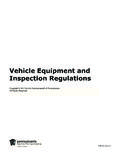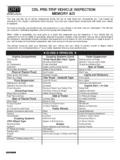Transcription of Grade 8 Physical Science SOL Review Packet
1 1 Grade 8 Physical Science SOL Review Packet 2 TABLE OF CONTENTS Grade 6 CONTENT SOL Review Section 1 Topic Page Energy .. 6 Earth s Energy Greenhouse Cloud Chemical Properties and Characteristics of Absorption of Thermal Irrigation and Power Clean Water and Earth s Layers of the Changes to the Virginia s Watershed Our Solar The Moon, Eclipses, and Development of Our Understanding of the Solar 3 Grade 7 CONTENT SOL Review History of the Cell Cell Plant & Animal Cell Cellular Life Body Photosynthesis Compared to Cellular Carbon, Water, and Nitrogen Predator & Prey Grade 8 SOL CONTENT Review Particle Theory of States of Acids, Bases, and Physical Chemical Historical Development of Atoms ..84 4 Periodic Ionic and Covalent Physical , Chemical, and Nuclear Balancing Simple Types of Chemical Temperature Phase Change Heat Sound Longitudinal Transverse Electromagnetic Lenses and Work, Force, and Electricity and 5 Grade 6 SOL CONTENT Review 6 ENERGY Two Kinds of Energy Potential Energy Kinetic Energy Not in use in use Stored In motion Renewable and Nonrenewable Resources Replenished or Replaced over SHORT period of time Take LONG periods of time to be replaced.
2 7 Advantages of Renewable Energy Disadvantages of Renewable Energy Sustainable Produces little waste products Clean air resource Generates less quantities of electricity than nonrenewable energy resources. Many sources rely mostly on weather conditions Renewable energy technology is more than traditional forms of energy Advantages of Nonrenewable Energy Disadvantages of Nonrenewable Energy Readily available and cheap in some areas Large amounts of electricity can be generated from fossil fuels Will eventually run out Produces photochemical pollution Produces greenhouse gases Coal, oil and natural gas are types of fossil fuels that we use for most of our energy needs, from heating our homes and electricity to fuel for our automobiles and transportation. Unfortunately, nonrenewable energy resources are limited in supply and will one day be depleted. Fossil fuels formed from plants and animals that lived hundreds of millions of years ago and became buried underneath the Earth s surface where their remains transformed into the materials used for our fuel.
3 What is the role of the sun in the formation of most energy sources on Earth? Image Source: Chemical Energy Chemical energy in fossil fuels is stored as potential energy. Potential Energy Chemical (potential) energy is released as electrical energy. ENERGY TANSFORMATIONS! 8 Energy Source Description Example Electrical energy Moving electric charges Power lines provide electrical energy for televisions. Thermal energy Total energy due to movement or vibration Thermal energy from a stove heats a metal pot. Chemical energy Stored in chemical compounds Chemical energy is stored in the food you eat. Radiant energy Light The light you see each day is radiant energy. Mechanical energy Associated with motion or position The bus you ride to school has mechanical energy Nuclear energy Stored in nucleus of atoms Nuclear fusion occurs in the sun and stars. Image Source: Can you name any energy transformations which are or can occur in the below picture?
4 _____ 9 ENERGY CONSUMPTION DATA CHART Image Source: SOL Released Questions: 1. Which energy transformation occurs first in a coal-burning power plant? (2009) A. Chemical energy to thermal energy B. Thermal energy to mechanical energy C. Thermal energy to electrical energy D. Mechanical energy to electrical energy 2. This picture shows a radiometer. It is designed to be placed in a sunny window. One side of each thin blade of the radiometer is painted black, and the other side is painted white. The Sun s rays strike the blades, and the device begins to spin. The device is powered by which kind of energy? (2009) A. Wind B. Solar C. Electrical D. Geothermal 10 3. Which of the following is an example of potential energy? (2009) A. A glass jar sitting on a shelf B. A flag waving in the wind C. A ball rolling along a sidewalk D. A battery powering a radio 4. As the energy needs for Virginia increase, new sources of energy are required to replace or supplement the nonrenewable sources of energy now in use.
5 Two sources of energy that are renewable and available in Virginia are _____. (2009) A. natural gas and wind power B. coal and hydropower C. petroleum and solar power D. wind power and solar power 5. What is one advantage of using a hydroelectric plant? (2009) A. It is expensive to build. B. It provides renewable energy to human populations. C. It has little effect on water flow. D. It has little effect on wildlife when being constructed. 6. Which of the following is a nonrenewable energy source? (2009) A. Solar collector B. Wind turbine C. Fossil fuel D. Hydroelectric generator 7. A major concern over nuclear energy is how to ___. (2015) A. deal with the large amounts of fossil fuels B. reduce the high levels of carbon dioxide emitted into the air C. prevent the depletion of the ozone layer D. store the waste products safely 8. Which action will most reduce the use of nonrenewable energy resources in a school district? (2015) A. Installing low-facets and toilets B.
6 Recycling worksheets and other paper products C. Limiting the sweeping and mopping of classrooms to once a month D. Replacing current lighting with more 11 EARTH S ENERGY BUDGET Most of the energy that is in Earth s atmosphere is in the form of solar energy, energy from the sun. The energy travels to Earth as electromagnetic waves. The energy which reaches Earth is mostly in three forms; visible light, infrared radiation, and ultraviolet radiation. Image Source: 1. Visible light ROYGBIV 2. Infrared radiation Wavelengths longer than red light 3. Ultraviolet radiation Wavelengths shorter than violet light As the sun passes through Earth s atmosphere; some is absorbed in the atmosphere and some is reflected. Clouds, dust, and gas particles reflect solar energy back to space. As you can see some of the sun s energy strikes Earth s surface and is reflected back into the atmosphere. Keep in mind, there is a portion of energy which is absorbed by land and water and changed into heat.
7 According to NASA, it's this equilibrium of incoming and outgoing radiation that makes the Earth habitable. About 1/3 of the sun s incoming energy is reflected back out to space. About 1/2 of the energy striking Earth is absorbed by Earth s surface! 12 As the air or water is heated, the particles move faster and further apart, decreasing the density and causing them to rise. The cooler air or water becomes slower and denser and move closer together. As the cooler air becomes dense it sinks. The rising of warm air and sinking of cool air is known as convection. The exchange of incoming and outgoing radiation that warms the Earth is described as the greenhouse effect because of the similarity to a Greenhouse . How does a greenhouse work? Incoming ultraviolet (UV) radiation easily passes through the glass walls of a greenhouse and is absorbed by the plants and hard surfaces inside. Weaker infrared radiation (IR) radiation, however, has difficulty passing through the glass walls and is trapped inside, warming the greenhouse.
8 This effect lets plants grow inside a greenhouse, even during a cold winter ( ). How is the heating of Earth similar to the greenhouse effect? The sun passes through the atmosphere. Earth s surface is heated by the sunlight during the day. The Earth will then cool at night and release heat (infrared radiation) back into the atmosphere. Some of the heat will be trapped by greenhouse gases. These gases form a blanket around Earth, holding in the heat. The greenhouse effect is the process by which gases hold or trap heat in the atmosphere. It keeps our atmosphere at a temperature suitable for most organisms. Unequal Heating of Earth s surface 13 Cloud Formation: 1. Warm air rises 2. Air cools 3. Water vapor condenses 4. Water droplets form 5. Droplets of water 6. attach to dust 7. particles to form 8. clouds STORMS: How do thunderstorms and hurricanes differ? Thunderstorms Hurricanes Form within cumulonimbus clouds Heavy rainstorms with thunder & lightning Most form when warm air front is forced upward a cold air front.
9 Can also form on hot, humid days. (Moisture + Unstable air + Lift) Some formed when land is strongly heated Begins over warm water as a low pressure area or tropical disturbance Includes high winds and heavy rains Forms mostly in the Atlantic Ocean north of the equator. Tropical disturbance Tropical storm Hurricane Ocean temperatures of 82 F (27 F) or warmer RELEASED SOL QUESTIONS: 1. Clouds are formed when millions of drops of water become suspended in the air. Which of the following is a step in the process of cloud formation? (2009) A. Expansion of cold air B. Formation of carbon dioxide C. Condensation of water vapor D. Breakdown of atmospheric ozone 14 2. Energy from the Sun is distributed around Earth by _____. (2009) A. subduction and rift zones B. radiation and convection C. tectonic plates D. solar flares MATTER Matter is anything that has mass and takes up space. Mass is the amount of matter (how much stuff) an object contains.
10 The mass of an object will not change if the force of gravity on it changes. For mass, the SI unit is kilogram (kg). The amount of space that matter occupies is the volume. Common units of measurement for volume include cm3, liter (L), and milliliter (mL). Matter is made of smaller particles. Elements are smaller particles of matter, made of one kind of atom that cannot be broken down into other substances by chemical or Physical means. Atoms are the smallest units of an element that has the properties of that element. Atoms are made of subatomic particles (protons, neutrons, and electrons): Image Source: John Dalton, a scientist, is known for his Atomic Theory . Here are Dalton s main conclusions ( Science Explorer, ) which still hold true until today: Atoms can t be broken into smaller pieces. Atoms are indivisible. In any element, all the atoms are exactly alike. Atoms of different elements are different. Atoms of two or more elements can combine to form compounds.



